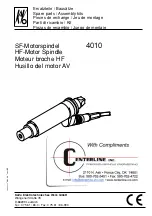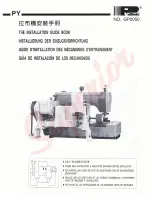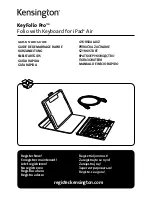
P/N 109027 rev. C
7
QS30 Series Diffuse-Mode Laser Sensor
Banner Engineering Corp.
•
Minneapolis, MN U.S.A.
www.bannerengineering.com • Tel: 763.544.3164
Figure 4. Single-Point TEACH (Light
Operate shown)
Darkest
(no signal)
Most Light
(saturated
signal)
Single
taught
point
Sensing window size
adjusted by
Manual Adjust
Output OFF
Output OFF
Output ON
Single-Point Static TEACH (Sensing Window)
• Sets a single ON condition
• All other conditions (lighter or darker) result in OFF output
• Sensing window size (sensitivity) is adjustable using “+” and “-” buttons
(Manual Adjust)
Single-Point TEACH is most useful when a product may not always appear in the
same place, or when other signals may appear. Single-Point TEACH programs a
sensing window, with the Output ON condition inside the window, and the Output OFF
conditions outside the window (see Figure 4). Output ON and OFF conditions can be
reversed by changing Light/Dark Operate status in SETUP mode.
Single-Point TEACH programming may be accomplished only using Static TEACH.
The sensor learns a single sensing condition, and adds switching thresholds above
and below the taught condition to create a sensing window.
Single-Point TEACH and Manual Adjust
Using Manual Adjust with Single-Point TEACH expands or contracts the size of the
window. The lighted LEDs on the light bar separate to a greater or lesser extent to
exhibit the relative sensing window size.
Push Button
Remote Line
Display Shows
Access
TEACH
Mode
• Press and Hold
• Present Output ON
condition
• Single-pulse remote
line
Power LED: OFF
Output LED: ON (Push Button)
Output LED: OFF (Remote)
Bargraph: #5 & 6 flashing
Learn
Set Point
(Output ON)
Condition
• Present Output ON
condition
• Double-click
• Double-pulse
remote line
Teach Accepted
Power LED: ON
Bargraph: #3 & 6 flash to show
Single-Point TEACH
Sensor returns to RUN mode with
new settings
Teach Unacceptable
Power LED: OFF
Bargraph: #1, 3, 6, 8 flash to show fail,
then #5 & 6 begin to flash
Sensor waits for valid Teach condition
T
T
T
T






























